| Season Start: | 30 August 1980 | | Season End: | 21 March 1981 | | Season Length: | 30 Weeks | | Actual Weeks: | 28 Weeks | | Writers: | Andrew McCulloch, Andrew Smith, Christopher H. Bidmead, David Fisher, John Flanagan, Johnny Byrne, Steve Gallagher and Terrance Dicks | | Directors: | Graeme Harper, John Black, Lovett Bickford, Paul Joyce, Peter Grimwade, Peter Moffatt and Terence Dudley | | Producer: | John Nathan-Turner | | Executive Producer: | Barry Letts | | Script Editor: | Christopher H. Bidmead | | Visual Effects: | Andrew Lazell, John Brace, John Horton, Mat Irvine, Peter Logan, Steven Drewett and Tony Harding | | Title Sequence: | Sid Sutton | | Title Music: | Ron Grainer and the BBC Radiophonic Workshop. Arranged by Peter Howell |
|
Incarnation of the Doctor: |
The Fourth Doctor (Regenerates)
|
|
Other Incarnations of the Doctor: |
The Fifth Doctor (Newly Regenerated) |
| Number of
Companions: |
5 |
| The
Companions: |
K9 Mk II (Departs), Romana 2 (Departs), Adric (Joins), Nyssa (Joins) and Tegan Jovanka (Joins)
|
| Number of
Stories: |
7
|
| Number of
Incomplete/Missing Stories: |
0
|
| Number of
Episodes: |
28
|
| Number of
Incomplete/Missing Episodes: |
0
|
| Percentages: |
| Full Stories Held | 100% | | Episodes Held | 100% |
|
| Doctor Who Magazine Poll (1998) | | Season: | 71.66%  (Position = 8 out of 27) (Position = 8 out of 27) | | Best Story: | Logopolis (80.12%) | | Worst Story: | Meglos (56.68%) |
| | Doctor Who Magazine Poll (2009) | | Season: | 68.25%  (Position = 13 out of 31) (Position = 13 out of 31) | | Best Story: | Logopolis (76.42%) | | Worst Story: | Meglos (52.11%) |
| | Doctor Who Magazine Poll (2014) | | Season: | 68.58%  (Position = 21 out of 36) (Position = 21 out of 36) | | Best Story: | Logopolis (77.43%) | | Worst Story: | Meglos (53.87%) |
|
|
 'It's the end... but the moment has been prepared for…' 'It's the end... but the moment has been prepared for…'
The Doctor
(Logopolis) |
|
|
|
|
| |
 |
| K9 and Romana |
|
 For those watching the start of Season Eighteen, when it was originally broadcast, could hardly have realised how important this season was to the show and how it would affect those still to come. For those watching the start of Season Eighteen, when it was originally broadcast, could hardly have realised how important this season was to the show and how it would affect those still to come.
 As Doctor Who headed into the 1980s, an all-new production team was brought in to helm the series. Firstly there was new Producer John Nathan-Turner, who would go on to helm the show for the next ten years until the show was cancelled in 1989. This marked the end of a long rise up through the BBC hierarchy for John Nathan-Turner who had originally worked as an actor before breaking into the BBC as a floor assistant. In that capacity, John Nathan-Turner had worked on Doctor Who as far back as the 1969 Second Doctor story "The Space Pirates". Since then he had gradually moved up the ranks, and had served as Doctor Who’s Production Unit Manager since Season Fifteen. As Doctor Who headed into the 1980s, an all-new production team was brought in to helm the series. Firstly there was new Producer John Nathan-Turner, who would go on to helm the show for the next ten years until the show was cancelled in 1989. This marked the end of a long rise up through the BBC hierarchy for John Nathan-Turner who had originally worked as an actor before breaking into the BBC as a floor assistant. In that capacity, John Nathan-Turner had worked on Doctor Who as far back as the 1969 Second Doctor story "The Space Pirates". Since then he had gradually moved up the ranks, and had served as Doctor Who’s Production Unit Manager since Season Fifteen.
 To assist John Nathan-Turner, Christopher H. Bidmead took over the position of Script Editor, from Douglas Adams, and former Producer Barry Letts took on the role as Executive Producer. This role was created as the BBC executives were concerned about John Nathan-Turner’s inexperience. Since leaving the show in 1974, Barry Letts had been keeping an informal eye on the show and so was more than willing to accept the appointment of becoming the show’s first-ever Executive Producer. To assist John Nathan-Turner, Christopher H. Bidmead took over the position of Script Editor, from Douglas Adams, and former Producer Barry Letts took on the role as Executive Producer. This role was created as the BBC executives were concerned about John Nathan-Turner’s inexperience. Since leaving the show in 1974, Barry Letts had been keeping an informal eye on the show and so was more than willing to accept the appointment of becoming the show’s first-ever Executive Producer.
 This new team’s philosophy was that the show had strayed too far into the realm of science fantasy rather than proper science-fiction and so this season would see a return to solid science. As the season progressed the stories became darker and more adult in tone. This new team’s philosophy was that the show had strayed too far into the realm of science fantasy rather than proper science-fiction and so this season would see a return to solid science. As the season progressed the stories became darker and more adult in tone.
 But it is what happened in front of the camera which had the most noticeable impact to the show. At the beginning of the season the regular characters of Romana, played by Lalla Ward, and K9, voiced once more by John Leeson, would depart from the show before this season ended and three brand new companions (these being Adric, Nyssa and Tegan Jovanka) would take their place. But it was the change in the lead role that would have the biggest impact as the Fourth Doctor’s era finally came to an end. And so, after appearing in a total of 178 episodes (in 42 stories, during a period of 7 years - the most for any incarnation of The Doctor – previously and since), fans at the time must have been wondering if Tom Baker’s era was destined to continue for ever. But it is what happened in front of the camera which had the most noticeable impact to the show. At the beginning of the season the regular characters of Romana, played by Lalla Ward, and K9, voiced once more by John Leeson, would depart from the show before this season ended and three brand new companions (these being Adric, Nyssa and Tegan Jovanka) would take their place. But it was the change in the lead role that would have the biggest impact as the Fourth Doctor’s era finally came to an end. And so, after appearing in a total of 178 episodes (in 42 stories, during a period of 7 years - the most for any incarnation of The Doctor – previously and since), fans at the time must have been wondering if Tom Baker’s era was destined to continue for ever.
 The season started with "The Leisure Hive" and straight away it was obvious that the show had undergone some radical changes as this story was the first to be broadcast with brand-new opening and closing title sequences, complete with the ‘80s-styled ‘neon tube’ logo designed by the Sid Sutton. The 1966 Delia Derbyshire arrangement of the theme music was also retired in favour of a new arrangement by Peter Howell. The season started with "The Leisure Hive" and straight away it was obvious that the show had undergone some radical changes as this story was the first to be broadcast with brand-new opening and closing title sequences, complete with the ‘80s-styled ‘neon tube’ logo designed by the Sid Sutton. The 1966 Delia Derbyshire arrangement of the theme music was also retired in favour of a new arrangement by Peter Howell.
 John Nathan-Turner also dropped the concept of having a six-part story - which he felt were too long and overextended to hold the viewers’ interest. He also successfully obtained funding for two extra stories. This meant that Season Eighteen would consist of only four-part stories, making it the longest Doctor Who season, since Season Six, and the only season in the show’s history in which all stories have had the same number of episodes. John Nathan-Turner also dropped the concept of having a six-part story - which he felt were too long and overextended to hold the viewers’ interest. He also successfully obtained funding for two extra stories. This meant that Season Eighteen would consist of only four-part stories, making it the longest Doctor Who season, since Season Six, and the only season in the show’s history in which all stories have had the same number of episodes.
 The longer-than-usual Season Eighteen forms a loose story arc dealing with the theme of entropy. While "Full Circle", "State of Decay", and "Warriors' Gate" trace The Doctor’s adventures in E-Space and the final two stories sees the return of The Master. Thus making it the first season to return to the format of early seasons of inter-locked stories. Virtually all stories from this season through to Season Twenty are linked together, with many running directly into each other. The longer-than-usual Season Eighteen forms a loose story arc dealing with the theme of entropy. While "Full Circle", "State of Decay", and "Warriors' Gate" trace The Doctor’s adventures in E-Space and the final two stories sees the return of The Master. Thus making it the first season to return to the format of early seasons of inter-locked stories. Virtually all stories from this season through to Season Twenty are linked together, with many running directly into each other.
 Consisting of seven stories and 28 episodes it was the last season of the original series to have an autumn-to-spring broadcast schedule and the last to have an autumn start until Season Twenty Three. After this season, the number of episodes per season also began decreasing. Consisting of seven stories and 28 episodes it was the last season of the original series to have an autumn-to-spring broadcast schedule and the last to have an autumn start until Season Twenty Three. After this season, the number of episodes per season also began decreasing.
 However, the show’s regular cast took exception to many of John Nathan-Turner’s changes, with Tom Baker and Lalla Ward criticising the change in theme music and opening titles. Tom Baker also criticised the new synthesised incidental music, comparing it unfavourably with Dudley Simpson’s earlier scores. The biggest criticism though was regarding the quality of the scripts. Tom Baker in particular wanted them to improve and regain some of the quality of those of the Philip Hinchcliffe era, as he felt that the quality of the scripts and storylines had declined under Graham Williams. However, the show’s regular cast took exception to many of John Nathan-Turner’s changes, with Tom Baker and Lalla Ward criticising the change in theme music and opening titles. Tom Baker also criticised the new synthesised incidental music, comparing it unfavourably with Dudley Simpson’s earlier scores. The biggest criticism though was regarding the quality of the scripts. Tom Baker in particular wanted them to improve and regain some of the quality of those of the Philip Hinchcliffe era, as he felt that the quality of the scripts and storylines had declined under Graham Williams.
 Unfortunately, despite John Nathan-Turner’s efforts to revamp the show, this season’s viewing figures fared badly against ITV’s debut of the glossy American import, Buck Rogers in the 25th Century. Fewer than six million viewers watched "The Leisure Hive" - the smallest such figure since the 1966 First Doctor story "The Smugglers". To make matters worse the audience figures declined over the course of this story so that by the third episode, Doctor Who had fallen out of the Top 100 programmes for the week for the first time since the very first story, the 1963 First Doctor story "An Unearthly Child". Whereas the previous six seasons for the Fourth Doctor managed to achieve some of the best average viewing figures (where four of these seasons were above 10 million) this season only managed an average of 5.8 million. This was a very substantial drop and one that made it the lowest watched season of the Fourth Doctor’s era and the lowest watched season of the show so far. And this was despite "Warriors' Gate" being seen by 7.5 million viewers and this season containing the classic story "State of Decay" (which at the time was only watched by 5.2 million viewers). Although no one could know it at the time, it was an early sign of the tumult that awaited Doctor Who throughout the Eighties... Unfortunately, despite John Nathan-Turner’s efforts to revamp the show, this season’s viewing figures fared badly against ITV’s debut of the glossy American import, Buck Rogers in the 25th Century. Fewer than six million viewers watched "The Leisure Hive" - the smallest such figure since the 1966 First Doctor story "The Smugglers". To make matters worse the audience figures declined over the course of this story so that by the third episode, Doctor Who had fallen out of the Top 100 programmes for the week for the first time since the very first story, the 1963 First Doctor story "An Unearthly Child". Whereas the previous six seasons for the Fourth Doctor managed to achieve some of the best average viewing figures (where four of these seasons were above 10 million) this season only managed an average of 5.8 million. This was a very substantial drop and one that made it the lowest watched season of the Fourth Doctor’s era and the lowest watched season of the show so far. And this was despite "Warriors' Gate" being seen by 7.5 million viewers and this season containing the classic story "State of Decay" (which at the time was only watched by 5.2 million viewers). Although no one could know it at the time, it was an early sign of the tumult that awaited Doctor Who throughout the Eighties...
 It also became obvious in "The Leisure Hive" and the following two stories, that K9’s involvement in the show was being reduced. Having been persuaded by John Nathan-Turner to reprise the role for this season. John Leeson returned as the voice of K9. Though K9 only appears at the start of the first episode of "The Leisure Hive" where he is seen becoming incapacitated by sea water while visiting Brighton Beach. K9 would eventually be written out of the show, as a regular companion, in "Warriors' Gate". It also became obvious in "The Leisure Hive" and the following two stories, that K9’s involvement in the show was being reduced. Having been persuaded by John Nathan-Turner to reprise the role for this season. John Leeson returned as the voice of K9. Though K9 only appears at the start of the first episode of "The Leisure Hive" where he is seen becoming incapacitated by sea water while visiting Brighton Beach. K9 would eventually be written out of the show, as a regular companion, in "Warriors' Gate".
 Also leaving in "Warriors' Gate" was Romana when she elected to stay in E-Space rather than obey the summons by the Time Lords to return to Gallifrey. Romana was seen again in the Twentieth Anniversary Special, "The Five Doctors", in 1983 (via footage of her and the Fourth Doctor from the unaired Season Seventeen story "Shada"). Lalla Ward also returned briefly for the Thirtieth-Anniversary Children In Need special "Dimensions in Time", in 1993. She also reprised the part of Romana in several instalments of Big Finish Productions Doctor Who audio series. Also leaving in "Warriors' Gate" was Romana when she elected to stay in E-Space rather than obey the summons by the Time Lords to return to Gallifrey. Romana was seen again in the Twentieth Anniversary Special, "The Five Doctors", in 1983 (via footage of her and the Fourth Doctor from the unaired Season Seventeen story "Shada"). Lalla Ward also returned briefly for the Thirtieth-Anniversary Children In Need special "Dimensions in Time", in 1993. She also reprised the part of Romana in several instalments of Big Finish Productions Doctor Who audio series.
 Playing the part of this season’s new companions were Matthew Waterhouse (as the young but intelligent Adric), Sarah Sutton (as the timid Nyssa) and Janet Fielding (as the bombastic Tegan Jovanka). Adric was introduced in "Full Circle" where he stows away aboard the TARDIS – only to be discovered, by The Doctor and Romana, in the following story "State of Decay". Both Nyssa and Tegan joined The Doctor in the season’s finale "Logopolis". Nyssa actually appeared in the preceding story "The Keeper of Traken" but then found herself reunited with The Doctor and Adric when The Watcher brings her to Logopolis just before her home planet of Traken is destroyed. Tegan’s discovery of The Doctor’s TARDIS is the classic scenario of a new companion mistaking the TARDIS for a real police box. Both Nyssa’s and Tegan’s encounter with The Doctor are very similar as both suffer at the hands of The Master. The Doctor’s arch-enemy makes a less than welcome return to the show (if you happen to find yourself in his presence), when he is seen in the final two stories, firstly taking over the body of Nyssa’s father Tremas and then using his Tissue Compression Eliminator on Tegan’s aunt Vanessa. Playing the part of this season’s new companions were Matthew Waterhouse (as the young but intelligent Adric), Sarah Sutton (as the timid Nyssa) and Janet Fielding (as the bombastic Tegan Jovanka). Adric was introduced in "Full Circle" where he stows away aboard the TARDIS – only to be discovered, by The Doctor and Romana, in the following story "State of Decay". Both Nyssa and Tegan joined The Doctor in the season’s finale "Logopolis". Nyssa actually appeared in the preceding story "The Keeper of Traken" but then found herself reunited with The Doctor and Adric when The Watcher brings her to Logopolis just before her home planet of Traken is destroyed. Tegan’s discovery of The Doctor’s TARDIS is the classic scenario of a new companion mistaking the TARDIS for a real police box. Both Nyssa’s and Tegan’s encounter with The Doctor are very similar as both suffer at the hands of The Master. The Doctor’s arch-enemy makes a less than welcome return to the show (if you happen to find yourself in his presence), when he is seen in the final two stories, firstly taking over the body of Nyssa’s father Tremas and then using his Tissue Compression Eliminator on Tegan’s aunt Vanessa.
 Both Nyssa and Tegan were introduced, along with the return of The Master, to ease the transition period between the Fourth Doctor and the Fifth Doctor – a ploy that had been used successfully in the past. To play the revitalised Master, John Nathan-Turner cast Anthony Ainley. It has been reported that Anthony Ainley was cast partly because of his facial similarity to the late Roger Delgado - the actor who originally played the part of The Master during the majority of the Third Doctor’s era. Anthony Ainley would go on to reprise the role of The Master in almost every season through to the end of the original run of the show. Both Nyssa and Tegan were introduced, along with the return of The Master, to ease the transition period between the Fourth Doctor and the Fifth Doctor – a ploy that had been used successfully in the past. To play the revitalised Master, John Nathan-Turner cast Anthony Ainley. It has been reported that Anthony Ainley was cast partly because of his facial similarity to the late Roger Delgado - the actor who originally played the part of The Master during the majority of the Third Doctor’s era. Anthony Ainley would go on to reprise the role of The Master in almost every season through to the end of the original run of the show.
 It was about halfway through the recording of this season that Tom Baker decided that he would leave the show at its end. Tom Baker was already the longest-serving Doctor by two years, but he was becoming visibly tired of the job. This was not helped by Lalla Ward leaving the show as well him disagreeing with several of the changes that John Nathan-Turner had made to the show plus not getting along well with Matthew Waterhouse. Tom Baker had hinted about leaving Doctor Who several times during the past few years, but it was now clear that both he and the production team decided that the time was right for him to leave the show. It was about halfway through the recording of this season that Tom Baker decided that he would leave the show at its end. Tom Baker was already the longest-serving Doctor by two years, but he was becoming visibly tired of the job. This was not helped by Lalla Ward leaving the show as well him disagreeing with several of the changes that John Nathan-Turner had made to the show plus not getting along well with Matthew Waterhouse. Tom Baker had hinted about leaving Doctor Who several times during the past few years, but it was now clear that both he and the production team decided that the time was right for him to leave the show.
 During the seven-year tenure of Tom Baker, the show had reached incredible heights of popularity. It was the heyday of Doctor Who. A time long remembered and an era missed by many when Tom Baker left. Despite breaking virtually all ties with the show (The Fourth Doctor did appear in the Twentieth Anniversary Special, "The Five Doctors", in 1983, but this was only in the form of footage from the incomplete Season Seventeen story "Shada"). Tom Baker is still recognised across the world as the quintessential Doctor Who. Although there have been many actors in the role, nobody is more inexorably linked the show than the reclusive Tom Baker, and the one who more than any other has kept the air of mystique since he left the show. During the seven-year tenure of Tom Baker, the show had reached incredible heights of popularity. It was the heyday of Doctor Who. A time long remembered and an era missed by many when Tom Baker left. Despite breaking virtually all ties with the show (The Fourth Doctor did appear in the Twentieth Anniversary Special, "The Five Doctors", in 1983, but this was only in the form of footage from the incomplete Season Seventeen story "Shada"). Tom Baker is still recognised across the world as the quintessential Doctor Who. Although there have been many actors in the role, nobody is more inexorably linked the show than the reclusive Tom Baker, and the one who more than any other has kept the air of mystique since he left the show.
 Season Eighteen marked a turning point in the show. John Nathan-Turner would continue to try and make Doctor Who fit for the 1980’s but without Tom Baker playing the lead role, and the increasing amount of rival programmes being shown at the same time, the popularity of the show would never be as high again – not that is until the show returned in 2005. Season Eighteen marked a turning point in the show. John Nathan-Turner would continue to try and make Doctor Who fit for the 1980’s but without Tom Baker playing the lead role, and the increasing amount of rival programmes being shown at the same time, the popularity of the show would never be as high again – not that is until the show returned in 2005.
 As for the actor taking over from Tom Baker, Peter Davison had the unenviable task of being The Doctor who followed the highly popular Tom Baker. Would he succeed in this huge task and manage to gain a loyal following of his own? Viewers at the time would have to wait until the start of Season Nineteen to decide… As for the actor taking over from Tom Baker, Peter Davison had the unenviable task of being The Doctor who followed the highly popular Tom Baker. Would he succeed in this huge task and manage to gain a loyal following of his own? Viewers at the time would have to wait until the start of Season Nineteen to decide…
|
|
|
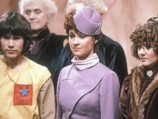 |
| Adric, Tegan and Nyssa |
|
 A new theme tune and a new opening sequence. Doctor Who had undergone a transformation, to bring the show into the 1980’s under the leadership of new Producer John Nathan-Turner. A new theme tune and a new opening sequence. Doctor Who had undergone a transformation, to bring the show into the 1980’s under the leadership of new Producer John Nathan-Turner.
 The season started with "The Leisure Hive" and clearly things were already changing but it was not until the third story "Full Circle", when The Doctor and Romana found themselves trapped in E-Space, that this season really took off. "Full Circle" is famous amongst fans for being the story that introduced Adric to the show. This story also contains a clever plot twist near the end when The Doctor discovers that the crew aboard the Starliner, that had crashed on the planet Alzarius, are not Terradonians who have become misplaced from their own world, but are in fact Alzarians in their human form and that there is three aspects of their race; spiders, Marshmen, and the current humanoids. Therefore the humanoid Alzarians are in fact unaware that they are attempting to leave their home planet for another that is not where they believed they arrived from. At the end if the story Adric stows away aboard the TARDIS - only to be discovered, by The Doctor and Romana, in the following story "State of Decay". The season started with "The Leisure Hive" and clearly things were already changing but it was not until the third story "Full Circle", when The Doctor and Romana found themselves trapped in E-Space, that this season really took off. "Full Circle" is famous amongst fans for being the story that introduced Adric to the show. This story also contains a clever plot twist near the end when The Doctor discovers that the crew aboard the Starliner, that had crashed on the planet Alzarius, are not Terradonians who have become misplaced from their own world, but are in fact Alzarians in their human form and that there is three aspects of their race; spiders, Marshmen, and the current humanoids. Therefore the humanoid Alzarians are in fact unaware that they are attempting to leave their home planet for another that is not where they believed they arrived from. At the end if the story Adric stows away aboard the TARDIS - only to be discovered, by The Doctor and Romana, in the following story "State of Decay".
 "State of Decay" is a classic chilling gothic story containing a medieval village overshadowed by a tall tower, three mysterious lords who rule, a swarm of bats and vampires. But ‘The Three Who Rule’ are no ordinary vampires because they are in fact the surviving crew of the Hydrax who have become vampire servants of the Great Vampire - a race referred to in Time Lord mythology who it had been thought had all been exterminated by the Time Lords. With the discovery of Adric aboard the TARDIS, and having to deal with the last surviving member of a race that the Time Lords had trouble destroying, The Doctor and Romana have a lot to deal with. "State of Decay" is a classic chilling gothic story containing a medieval village overshadowed by a tall tower, three mysterious lords who rule, a swarm of bats and vampires. But ‘The Three Who Rule’ are no ordinary vampires because they are in fact the surviving crew of the Hydrax who have become vampire servants of the Great Vampire - a race referred to in Time Lord mythology who it had been thought had all been exterminated by the Time Lords. With the discovery of Adric aboard the TARDIS, and having to deal with the last surviving member of a race that the Time Lords had trouble destroying, The Doctor and Romana have a lot to deal with.
 After the departure of Romana and K9 in "Warriors' Gate" The Doctor, travelling once more back in normal space alone with just Adric, finds himself summoned to the planet of Traken. There they meet Nyssa who helps them to defeat The Doctor’s arch-enemy, The Master, whose TARDIS, disguised as the Melkur, has arrived on this tranquil planet. The Master who is still in a wretched state, due to being at the end of his last regeneration, is seeking the Union of Traken’s power source in the hope that it will enable him to obtain a new set of regenerations. But it is the ending that is worth watching as The Master, having been foiled by The Doctor who has left Traken with Adric thinking that The Master has been dealt with, finds a new way to obtain a new body. The Master traps Nyssa’s father Consul Tremas, when he discovers The Master’s TARDIS which is disguised as an antique looking longcase clock. The Master then merges with Consul Tremas’ body before fleeing Traken in his TARDIS - leaving the now orphan Nyssa wondering as to her father’s whereabouts. After the departure of Romana and K9 in "Warriors' Gate" The Doctor, travelling once more back in normal space alone with just Adric, finds himself summoned to the planet of Traken. There they meet Nyssa who helps them to defeat The Doctor’s arch-enemy, The Master, whose TARDIS, disguised as the Melkur, has arrived on this tranquil planet. The Master who is still in a wretched state, due to being at the end of his last regeneration, is seeking the Union of Traken’s power source in the hope that it will enable him to obtain a new set of regenerations. But it is the ending that is worth watching as The Master, having been foiled by The Doctor who has left Traken with Adric thinking that The Master has been dealt with, finds a new way to obtain a new body. The Master traps Nyssa’s father Consul Tremas, when he discovers The Master’s TARDIS which is disguised as an antique looking longcase clock. The Master then merges with Consul Tremas’ body before fleeing Traken in his TARDIS - leaving the now orphan Nyssa wondering as to her father’s whereabouts.
 The must watch story of the season though must go to the season’s finale, "Logopolis". Not only does this story again feature The Master – this time at his very worst as death follows in his wake – but also the introduction of a new companion, the Australian Tegan Jovank, who discovers the TARDIS by accident when she makes the mistake of thinking that the time machine is a real police box. The must watch story of the season though must go to the season’s finale, "Logopolis". Not only does this story again feature The Master – this time at his very worst as death follows in his wake – but also the introduction of a new companion, the Australian Tegan Jovank, who discovers the TARDIS by accident when she makes the mistake of thinking that the time machine is a real police box.
 Also joining the TARDIS in this story, as a regular character, is Nyssa who finds herself reunited with The Doctor and Adric when she is brought to Logopolis by the mysterious Watcher just before her home world is destroyed. Life for Nyssa has just becoming very strange. Not only having to contend with the fact that she is the last surviving member of her race, and that she is now living and travelling in a time machine with strangers, but she also has to come to terms with the startling truth that the person, who she discovers is also on Logopolis, is not her father, Tremas, but is in fact the evil Master who killed her father so as to inherit his body. Also joining the TARDIS in this story, as a regular character, is Nyssa who finds herself reunited with The Doctor and Adric when she is brought to Logopolis by the mysterious Watcher just before her home world is destroyed. Life for Nyssa has just becoming very strange. Not only having to contend with the fact that she is the last surviving member of her race, and that she is now living and travelling in a time machine with strangers, but she also has to come to terms with the startling truth that the person, who she discovers is also on Logopolis, is not her father, Tremas, but is in fact the evil Master who killed her father so as to inherit his body.
 But it is the final few minutes of this story that are remembered the most. Undoubtedly the build up to, and the regeneration itself, where the Fourth Doctor becomes the Fifth Doctor must be considered to be the best regeneration sequence of all time. But it is the final few minutes of this story that are remembered the most. Undoubtedly the build up to, and the regeneration itself, where the Fourth Doctor becomes the Fifth Doctor must be considered to be the best regeneration sequence of all time.
 Having fallen from a moving gantry of a radio telescope to the ground below, the injured Doctor is joined by Adric, Nyssa and Tegan. But as The Doctor starts to regenerate he is at first taunted by visions of his previous enemies, including a Dalek, a Cyberman, Davros and The Master. But then visions of his previous companions appear and give him moral support. The mysterious Watcher then appears once more and merges with The Doctor so completing the regeneration process. As his current companions look on, The Doctor sits up and they, along with the watching viewers witness the first sight of a new, younger looking incarnation of The Doctor - the Fifth Doctor. Having fallen from a moving gantry of a radio telescope to the ground below, the injured Doctor is joined by Adric, Nyssa and Tegan. But as The Doctor starts to regenerate he is at first taunted by visions of his previous enemies, including a Dalek, a Cyberman, Davros and The Master. But then visions of his previous companions appear and give him moral support. The mysterious Watcher then appears once more and merges with The Doctor so completing the regeneration process. As his current companions look on, The Doctor sits up and they, along with the watching viewers witness the first sight of a new, younger looking incarnation of The Doctor - the Fifth Doctor.
|
|
|
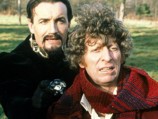 |
| The Master and The Doctor |
|
 It seems that every season has at least one weak story and in the case of this season that story is "Meglos" – with "The Leisure Hive" coming a close second. The most obvious problem with "Meglos" is the fact that the villain, before becoming a doppelganger of The Doctor, looks like a cactus. The only interesting thing about this story is Jacqueline Hill, who had originally played companion Barbara Wright, and who returns to the show playing the part of Lexa. It seems that every season has at least one weak story and in the case of this season that story is "Meglos" – with "The Leisure Hive" coming a close second. The most obvious problem with "Meglos" is the fact that the villain, before becoming a doppelganger of The Doctor, looks like a cactus. The only interesting thing about this story is Jacqueline Hill, who had originally played companion Barbara Wright, and who returns to the show playing the part of Lexa.
 As to the best story of this season there are three stories to choose from: "State of Decay", "The Keeper of Traken" and "Logopolis". As to the best story of this season there are three stories to choose from: "State of Decay", "The Keeper of Traken" and "Logopolis".
 Despite, at the time, only being watched by 5.2 million viewers "State of Decay" has strong roots with the vampire genre and is seen by many fans as a classic story. Not only does this story contain three vampires, who rule without mercy, the real villain of this story is the last survivor of the Great Vampires - a race referred to in Time Lord mythology and who are thought to have all been exterminated long ago by the Time Lords. Despite, at the time, only being watched by 5.2 million viewers "State of Decay" has strong roots with the vampire genre and is seen by many fans as a classic story. Not only does this story contain three vampires, who rule without mercy, the real villain of this story is the last survivor of the Great Vampires - a race referred to in Time Lord mythology and who are thought to have all been exterminated long ago by the Time Lords.
 "The Keeper of Traken" in contrast is set in a tranquil setting on a peaceful world which is then ruined when The Master arrives. Unknown to anyone, including The Doctor, The Master’s TARDIS is disguised as the Melkur which arrived years ago on Traken but became calcified in a grove in Traken’s capital. But inside The Master, still blackened and emaciated as he was in his last meeting with The Doctor, is plotting to obtain a new set of regenerations. Regardless of the cost to the peaceful Trakens, including Nyssa and her family. "The Keeper of Traken" in contrast is set in a tranquil setting on a peaceful world which is then ruined when The Master arrives. Unknown to anyone, including The Doctor, The Master’s TARDIS is disguised as the Melkur which arrived years ago on Traken but became calcified in a grove in Traken’s capital. But inside The Master, still blackened and emaciated as he was in his last meeting with The Doctor, is plotting to obtain a new set of regenerations. Regardless of the cost to the peaceful Trakens, including Nyssa and her family.
 "Logopolis" continues with The Master killing nearly everyone who crosses his path. Because of his actions (directly or indirectly) this story has arguably the largest number of deaths of any Doctor Who story - albeit mostly off-camera - making The Master a mass murderer of unprecedented proportions. But the highpoint of this story is the build up to the regeneration of the Fourth Doctor into the Fifth Doctor where The Doctor has visions where he is taunted by his enemies and is given moral support by his former companions. "Logopolis" continues with The Master killing nearly everyone who crosses his path. Because of his actions (directly or indirectly) this story has arguably the largest number of deaths of any Doctor Who story - albeit mostly off-camera - making The Master a mass murderer of unprecedented proportions. But the highpoint of this story is the build up to the regeneration of the Fourth Doctor into the Fifth Doctor where The Doctor has visions where he is taunted by his enemies and is given moral support by his former companions.
 If forced to choose the best story. The vote would have to go to "Logopolis" - unless of course you are still mourning the fact that this story was Tom Baker’s last as the Fourth Doctor. If forced to choose the best story. The vote would have to go to "Logopolis" - unless of course you are still mourning the fact that this story was Tom Baker’s last as the Fourth Doctor.
|
|
|
|
|
| |
The Firsts:
 The first season that has an overall story arc leading up to the season finale. The first season that has an overall story arc leading up to the season finale.
 The first story to feature K9 voiced by John Leeson (since "The Armageddon Factor"). (The Leisure Hive) The first story to feature K9 voiced by John Leeson (since "The Armageddon Factor"). (The Leisure Hive)
 John Nathan-Turner's first involvement in the show as Producer. (The Leisure Hive) John Nathan-Turner's first involvement in the show as Producer. (The Leisure Hive)
 The first Doctor Who story to feature the ‘80s-styled ‘neon tube’ logo designed by the Sid Sutton. (The Leisure Hive) The first Doctor Who story to feature the ‘80s-styled ‘neon tube’ logo designed by the Sid Sutton. (The Leisure Hive)
 Jacqueline Hill's first story playing a character other than former companion Barbara Wright (since leaving the show in 1965). (Meglos) Jacqueline Hill's first story playing a character other than former companion Barbara Wright (since leaving the show in 1965). (Meglos)
 The introduction of companion Adric played by Matthew Waterhouse. (Full Circle) The introduction of companion Adric played by Matthew Waterhouse. (Full Circle)
 The first Doctor Who story to be written by Steve Gallagher. (Warriors' Gate) The first Doctor Who story to be written by Steve Gallagher. (Warriors' Gate)
 The introduction of companion Nyssa played by Sarah Sutton. (The Keeper of Traken) The introduction of companion Nyssa played by Sarah Sutton. (The Keeper of Traken)
 Anthony Ainley's first appearance in the show as The Master. (The Keeper of Traken) Anthony Ainley's first appearance in the show as The Master. (The Keeper of Traken)
 Peter Davison's first appearance as the Fifth Doctor. (Logopolis) Peter Davison's first appearance as the Fifth Doctor. (Logopolis)
 The introduction of companion Tegan Jovanka played by Janet Fielding. (Logopolis) The introduction of companion Tegan Jovanka played by Janet Fielding. (Logopolis)
|
| |
The Lasts (Subject to Future Stories):
 Lalla Ward's last story as the second incarnation of Romana. (Warriors' Gate) Lalla Ward's last story as the second incarnation of Romana. (Warriors' Gate)
 John Leeson’s last regular story as the voice of K9. (Warriors' Gate) John Leeson’s last regular story as the voice of K9. (Warriors' Gate)
 Tom Baker's last regular appearance as the Fourth Doctor. (Logopolis) Tom Baker's last regular appearance as the Fourth Doctor. (Logopolis)
 Christopher H Bidmead' last story as Script Editor. (Logopolis) Christopher H Bidmead' last story as Script Editor. (Logopolis)
|
| |
| Doctor Who CMS Magazine (In Vision) | Issue 54: Season 18 Overview - (Released: November 1994) | | Doctor Who Monthly - Review | Issue 52 - (Released: May 1981) | | Doctor Who Magazine - Episode Guide | Issue 156 - (Released: January 1990) | | Doctor Who Magazine - Article | Issue 290 - (Released: May 2000) | | Doctor Who Magazine - Countdown to 50 | Issue 447 - (Released: May 2012) |
| Title | Release Date (UK) | Format | Source | Companions | | K9 and Company - A Girls Best Friend | December 1981 | TV | BBC | Sarah Jane Smith and K9 | | Capricorn: I Was A Monster!!! | December 2002 | Short Story | The Big Finish Short Trips 1: Zodiac | Romana | | Mauritz | June 2003 | Short Story | The Big Finish Short Trips 3: A Universe of Terrors | Adric | | O, Darkness | September 2003 | Short Story | he Big Finish Short Trips 5: Steel Skies | Romana and Adric | | Checkpoint | September 2005 | Short Story | The Big Finish Short Trips 17: The Centenarian | Romana | | The Invasion of E-Space | October 2010 | Audio | The Big Finish Audio Stories (Companion Chronicles) | Romana |
|
|
| |
The Doctor and Companions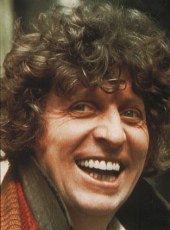 | | The Fourth Doctor |
|
| 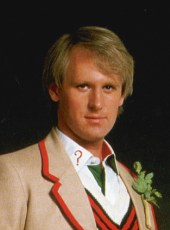 | | The Fifth Doctor |
| | | | |
 | | K9 Mk II |
| 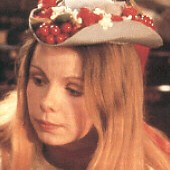 | | Romana 2 |
| 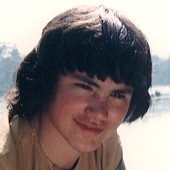 | | Adric |
| | | | | 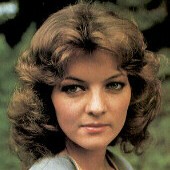 | | Nyssa |
| 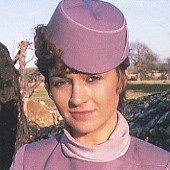 | | Tegan Jovanka |
|
|
On Release | | The Collection Season 18 Limited Edition Blu-Ray Cover |

VIDEO |
| | 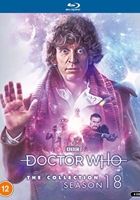 | | The Collection Season 18 Standard Edition Blu-Ray Cover |

VIDEO |
| | | | |
Magazines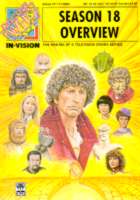 | | Doctor Who CMS Magazine (In Vision): Issue 54: Season 18 Overview |
| 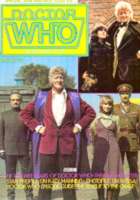 | | Doctor Who Monthly - Review: Issue 52 |
|  | | Doctor Who Magazine - Episode Guide: Issue 156 |
|  | | Doctor Who Magazine - Article: Issue 290 |
| | | | |  | | Doctor Who Magazine - Countdown to 50: Issue 447 |
|
|
|
|
| |
| |
|
| |
| |
|
| Doctor Who is the copyright of the British Broadcasting
Corporation. No infringements intended. This site is not endorsed by the BBC or
any representatives thereof. |
|